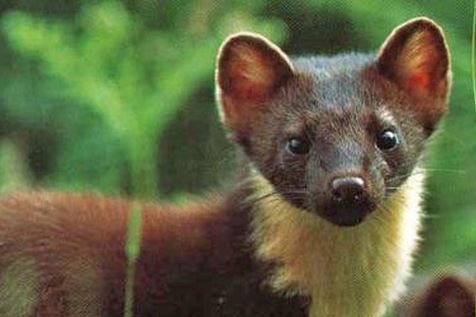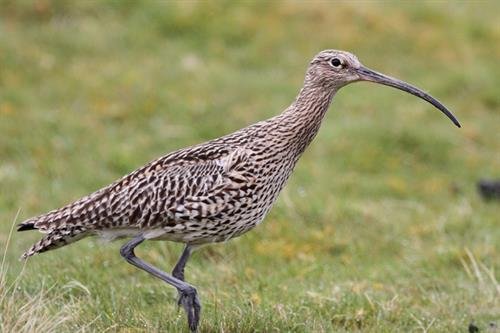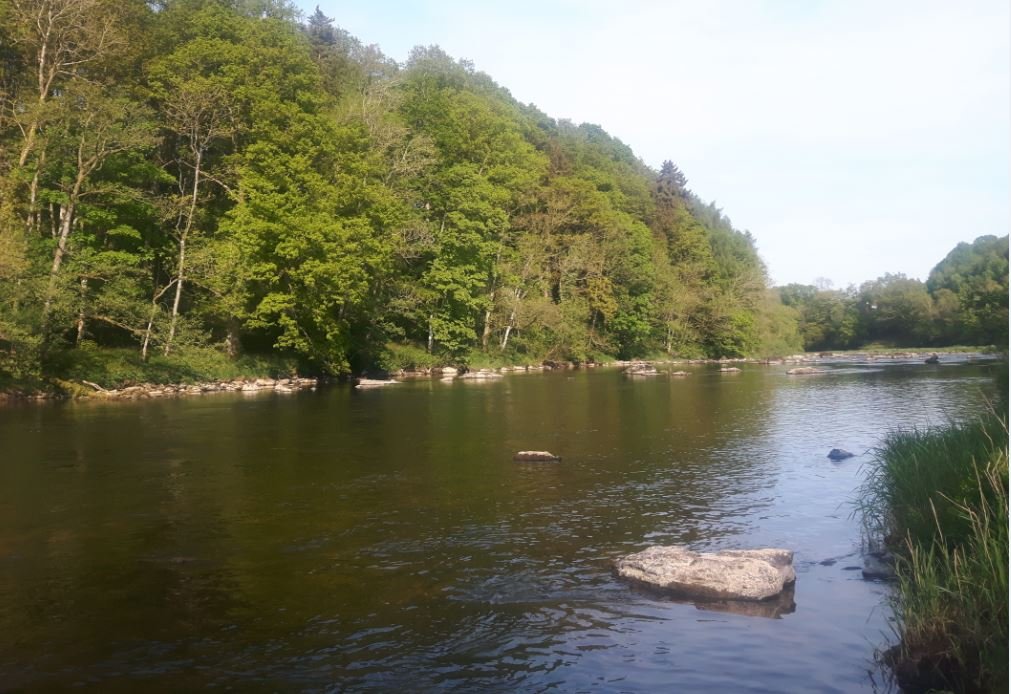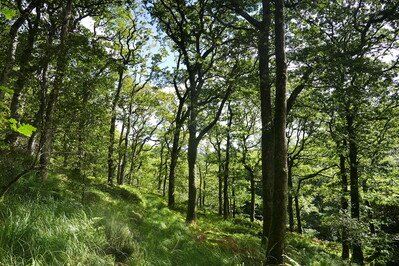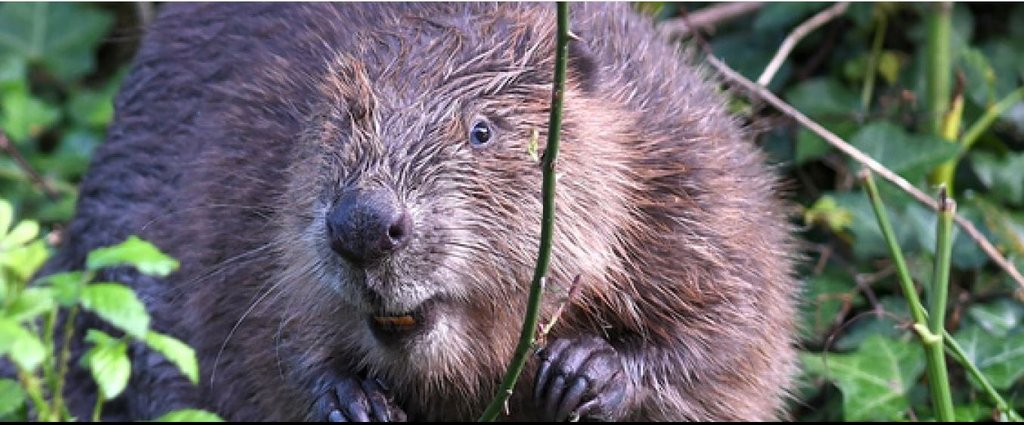State of Nature Wales 2023 shows that since careful monitoring of 380 Welsh species began in 1994, the numbers of those species has declined on average by 20%. Moth species on average showed the strongest decline at 43%. The extinction risk of 3,897 species was also assessed using Red List criteria and found that 18% (one in six) were at risk of extinction including plants and animals such as fen orchid, water vole and sand lizard and more than 2% are already extinct in Wales. Well-known species like the Atlantic Salmon and Curlew have also suffered critical declines in Wales. Bats show an average increase of 76% since 1998, primarily driven by large increases in two bat species that are recovering from historic declines thanks to increased protection of the places they live. Some butterfly species showing signs of recovery too. The Biodiversity Intactness Index measure for Wales is 37%. Although similar to other parts of the UK, it ranks amongst the lowest globally. Hope for the Future In Wales, there are a number of projects and initiatives which have the potential to make a real difference for nature. Natur am Byth - Wales’ flagship species recovery programme and major habitat projects restoring rivers, bogs and fens and sand dunes are underway. Examples of successful species projects in the report include protection of Little Terns in Denbighshire that has enabled the main Welsh breeding colony to become one of the most important in Britain, and peatland restoration in Ceredigion that has maintained the population of Large Heath Butterflies. National schemes such Local Places for Nature, Nature Networks, National Peatland Project and the National Forest scheme are delivering for nature across Wales. A new Sustainable Farming Scheme operating from 2025, will reward farmers for maintaining and creating wildlife habitat, with grants too for farms to collaborate on landscape-scale work to boost biodiversity.
Wildlife groups said there had been "some progress" in developing plans to tackle the nature crisis in Wales, but warned they were still "far from what is needed".The latest UK State of Nature 2023 report provides a detailed picture of how nature is faring and reveals the devastating scale of nature loss across the UK, the pressures affecting nature, and what is needed to address nature loss. Figures are presented in the report as UK findings in most cases. Where UK information is not available, results are presented for Great Britain and Northern Ireland separately.
The State of Nature Report 2023 reveals the abundance of 753 species studied has declined by 19% on average across the UK since 1970. Using Red List criteria, an assessment of 10,008 species found 16% (almost 1,500 species) are now threatened with extinction in Great Britain. The State of Nature report incorporates data from 60 research and conservation organisations drawing on monitoring schemes and biological recording centres, to provide a benchmark for the status of the UK’s wildlife. Previous editions were published in 2013, 2016 and 2019. Along with the UK report, separate reports are published for each country - including Wales. According to the report, changes in the way we manage our land for farming, and climate change were the biggest causes of wildlife decline on our land, rivers and lakes. Land management, pollution and non-native invasive species are also key drivers of species declines. At sea, and around our coasts, it was as a result of unsustainable fishing, climate change and marine development. Biodiversity Intactness Index (BII) The Biodiversity Intactness Index is a measure of the proportion of species still present in an area and their abundance, despite human impacts. The most recent estimate of the global BII is 77% which is substantially lower than the 90% level suggested as necessary to keep within planetary boundaries needed to maintain healthy functioning ecosystems. The UK has a BII of 42%, which is by a substantial margin lower than the global average. The UK index is also lower than other small, post-industrial, densely populated countries in western Europe, like the Netherlands and Belgium. Hope for the future There is hope. It is possible to reverse biodiversity losses through habitat restoration, sustainable agricultural practices and mitigating climate change. The UK are party to a new set of international biodiversity targets under the Convention on Biological Diversity (CBD): the Global Biodiversity Framework. To support the delivery of these, each UK country (including Wales) has committed to developing and implementing national biodiversity strategies. In many cases, countries have developed (or are committed to developing) legally binding targets to restore nature (Wales- by the end of this Senedd term in 2026). In the report they have grouped the CBD targets into the five broad areas:
- Improving species status
- Increasing nature-friendly farming, forestry and fisheries
- Expanding and managing protected areas
- Increasing ecosystem restoration
- Co-ordinating our response
However, nature recovery cannot be achieved by governments, statutory organisations and nature charities alone. Every sector of society has to play its part if we are to recover species abundance and reduce the risk of extinction and the report highlights ways in which we as individuals can make a contribution to nature. The report also acknowledges the tremendous efforts of thousands of volunteers in producing the State of Nature report giving up their time to help record and monitor wildlife.
State of Nature 2023 - report on the UK’s current biodiversity
State of Nature Wales 2023 State of Nature Wales 2023 shows that since careful monitoring of 380 Welsh species began in 1994, the numbers of those species has declined on average by 20%. Moth species on average showed the strongest decline at 43%. The extinction risk of 3,897 species was also assessed using Red List criteria and found that 18% (one in six) were at risk of extinction including plants and animals such as fen orchid, water vole and sand lizard and more than 2% are already extinct in Wales. Well-known species like the Atlantic Salmon and Curlew have also suffered critical declines in Wales. Bats show an average increase of 76% since 1998, primarily driven by large increases in two bat species that are recovering from historic declines thanks to increased protection of the places they live. Some butterfly species showing signs of recovery too. The Biodiversity Intactness Index measure for Wales is 37%. Although similar to other parts of the UK, it ranks amongst the lowest globally. Hope for the Future In Wales, there are a number of projects and initiatives which have the potential to make a real difference for nature. Natur am Byth - Wales’ flagship species recovery programme and major habitat projects restoring rivers, bogs and fens and sand dunes are underway. Examples of successful species projects in the report include protection of Little Terns in Denbighshire that has enabled the main Welsh breeding colony to become one of the most important in Britain, and peatland restoration in Ceredigion that has maintained the population of Large Heath Butterflies. National schemes such Local Places for Nature, Nature Networks, National Peatland Project and the National Forest scheme are delivering for nature across Wales. A new Sustainable Farming Scheme operating from 2025, will reward farmers for maintaining and creating wildlife habitat, with grants too for farms to collaborate on landscape-scale work to boost biodiversity. Wildlife groups said there had been "some progress" in developing plans to tackle the nature crisis in Wales, but warned they were still "far from what is needed". A Welsh Government spokeswoman said the government would "carefully consider the ideas for further action on nature contained within this important report." The Welsh government has also committed to putting new targets on nature recovery into law by the end of this Senedd term in 2026.
Wales - State of Nature
